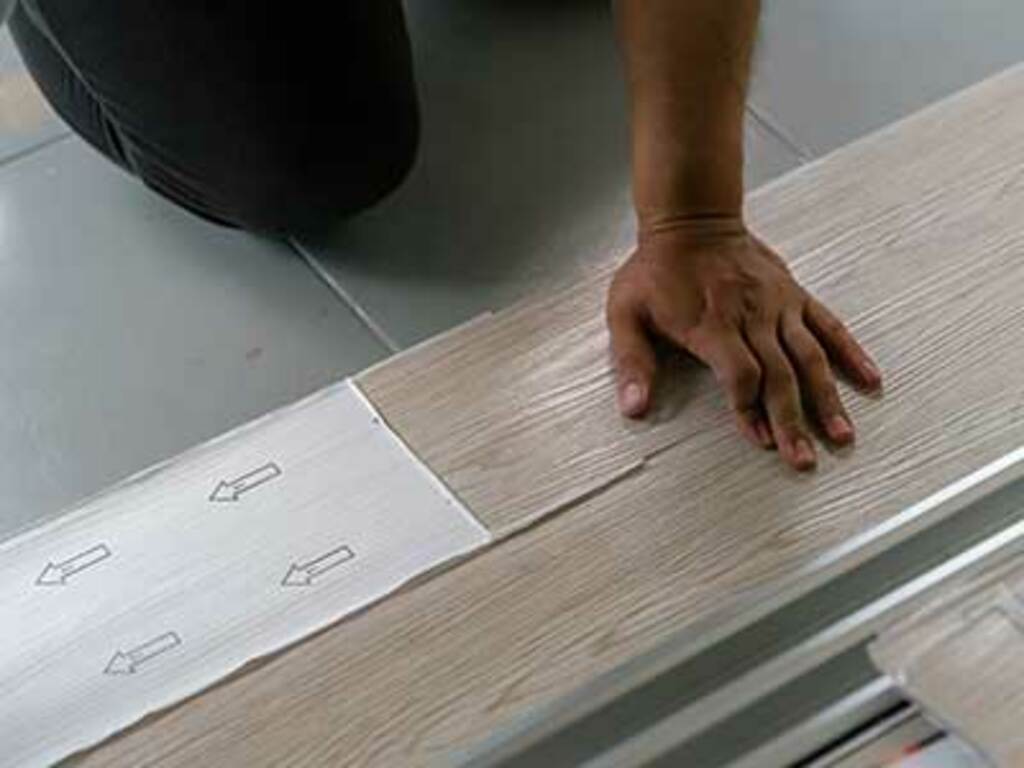How to Install Vinyl Plank Flooring
 Installing vinyl flooring is a great way to add some new life to a room. It is a durable, moisture-resistant flooring option that can be installed over concrete, wood, or existing vinyl flooring.
Installing vinyl flooring is a great way to add some new life to a room. It is a durable, moisture-resistant flooring option that can be installed over concrete, wood, or existing vinyl flooring.
To install vinyl plank flooring, you will need to prepare the surface by cleaning and flattening it. If the surface is not flat, you can use a self-levelling compound to make it smooth. Vinyl plank flooring is easy to cut and install, so it is a good DIY project. Once the flooring is in place, you can trim any excess material with a utility knife. Vinyl plank flooring is a durable and waterproof option that is easy to clean and maintain.
If you're looking for a durable and easy-to-install flooring option, vinyl plank flooring may be perfect for you. This type of flooring can be used in a variety of locations, including living rooms, bedrooms, bathrooms, kitchens and even recreational vehicles (RVs). It can also be used on covered porches, as long as the temperature isn't too cold. Vinyl plank flooring is a popular choice for many homeowners because it's durable, easy to clean and relatively inexpensive.
If you're installing vinyl plank flooring, it's recommended to use underlayment for extra cushion and sound reduction. Underlayment also acts as a moisture barrier when placed over concrete. If you're looking for a clean look, you'll also need to purchase coordinating transition strips to use at doorways or when switching flooring types.
How to Install Vinyl Flooring
Installation of vinyl plank flooring is a relatively easy process that can be completed over the course of a few hours. Prior to installation, it is important to acclimate the new flooring in the room where it will be installed. This can be done by placing the planks in the room for at least 48 hours. During installation, it is also important to make sure that the subfloor is clean and free of debris.
Removing the baseboards
If the baseboards are particularly difficult to remove, you may need to score the wall along the line where the baseboard meets the wall with a utility knife. This will help break any seal that may be holding the baseboard in place. Once you have removed the baseboards, use a putty knife to scrape away any caulk or paint that may be left behind.
Prepare Your Subfloor
If your subfloor is uneven, use a self-leveler to create a flat, smooth surface. Make sure the subfloor is clean and dry before you begin. Depending on the size of the area you're working on, you may need to mix the self-leveler yourself or purchase a pre-mixed product. Once the self-leveler is mixed, pour it into the area you're working on and use a flat tool to spread it evenly. Self-levelers dry quickly, so be sure to work fast.
Plan the Floor
Start by measuring the room and dividing it into equal squares. Then, plan your floor by drawing lines between the squares. Remember to take into account the walls that are bowed, and make sure your starting line is square to the room.
Measure the Walls
Measure the distance from the center of the wall to the starting wall, subtracting the expansion gap, and mark this distance at each end of the wall. Snap a chalk line between these two marks to get a straight line against the wall.
Calculate the width
To work out how much you'll need to cut off, first measure the width of the room and divide it by three. Then subtract this from the width of one plank. This is the amount you'll need to cut off each end of the first and last rows.
The First Row
The first step in any successful vinyl flooring installation project is getting the first row down properly. This means ensuring that the planks are aligned correctly and that the seams are as tight as possible. It's also important to make sure that the edges of the planks are touching the walls or other fixed objects as closely as possible. By taking the time to get the first row right, you can avoid many potential problems down the road.
Score the First Row of Planks
Now you're ready to start laying your vinyl planks. With the tongue side facing down, align the end of the first plank with the starting line and push it into place. Then lightly tap the plank with a rubber mallet to seat it firmly against the adjoining plank.
Place the Planks
For the first row, place the planks with the groove side facing up. The second and third rows will have the tongue side facing up. Make sure to offset the joints so that no two joints are in line with one another.
The Second Row
Measure and cut your first piece of vinyl flooring according to the instructions, using a cut end from the first row if necessary. Spread vinyl adhesive over the subfloor with a notched trowel, then set the plank in place and press it down. Repeat this process until the entire row has been installed.
Instructions
Insert the Tongue
Continue the tongue-and-groove assembly by placing the next piece’s tongue into the groove of the previous row’s first plank and rotate down to click together.
Connect the Short End
For the next piece, connect the short end first and then the long end. You should feel it lock. Continue the installation, making sure to stagger the joints by 6 inches and maintain the expansion gap.
Install Under Door Jambs
Install under door jambs by slightly bending the planks into place, and using a pull bar or tapping block to lock the joint if necessary.
Peel-and-Stick Vinyl Plank Flooring
 The floor preparation and layout are the same for peel-and-stick vinyl planks as they are for floating vinyl plank floors. To install each piece, peel the adhesive backing off the plank and stick it to the subfloor. When installing peel-and-stick vinyl plank flooring, you will need to prepare the subfloor the same way you would for a floating vinyl plank floor.
The floor preparation and layout are the same for peel-and-stick vinyl planks as they are for floating vinyl plank floors. To install each piece, peel the adhesive backing off the plank and stick it to the subfloor. When installing peel-and-stick vinyl plank flooring, you will need to prepare the subfloor the same way you would for a floating vinyl plank floor.
When the subfloor is ready, start by peeling the adhesive backing off of one plank and sticking it to the floor. Make sure to press down on the plank firmly to ensure that it adheres to the subfloor. Once the first plank is in place, continue installing the rest of the planks by peeling and sticking them one at a time. When all of the planks have been installed, use a utility knife to trim off any excess vinyl that may be hanging over the edge of the floor.
Once you have finished trimming the excess vinyl, you can then install baseboards or quarter-round moulding to give your floor a finished look. Peel-and-stick vinyl plank flooring is a great option for those who want to install a new floor quickly and easily. The installation process is fairly straightforward and can be done in a weekend.